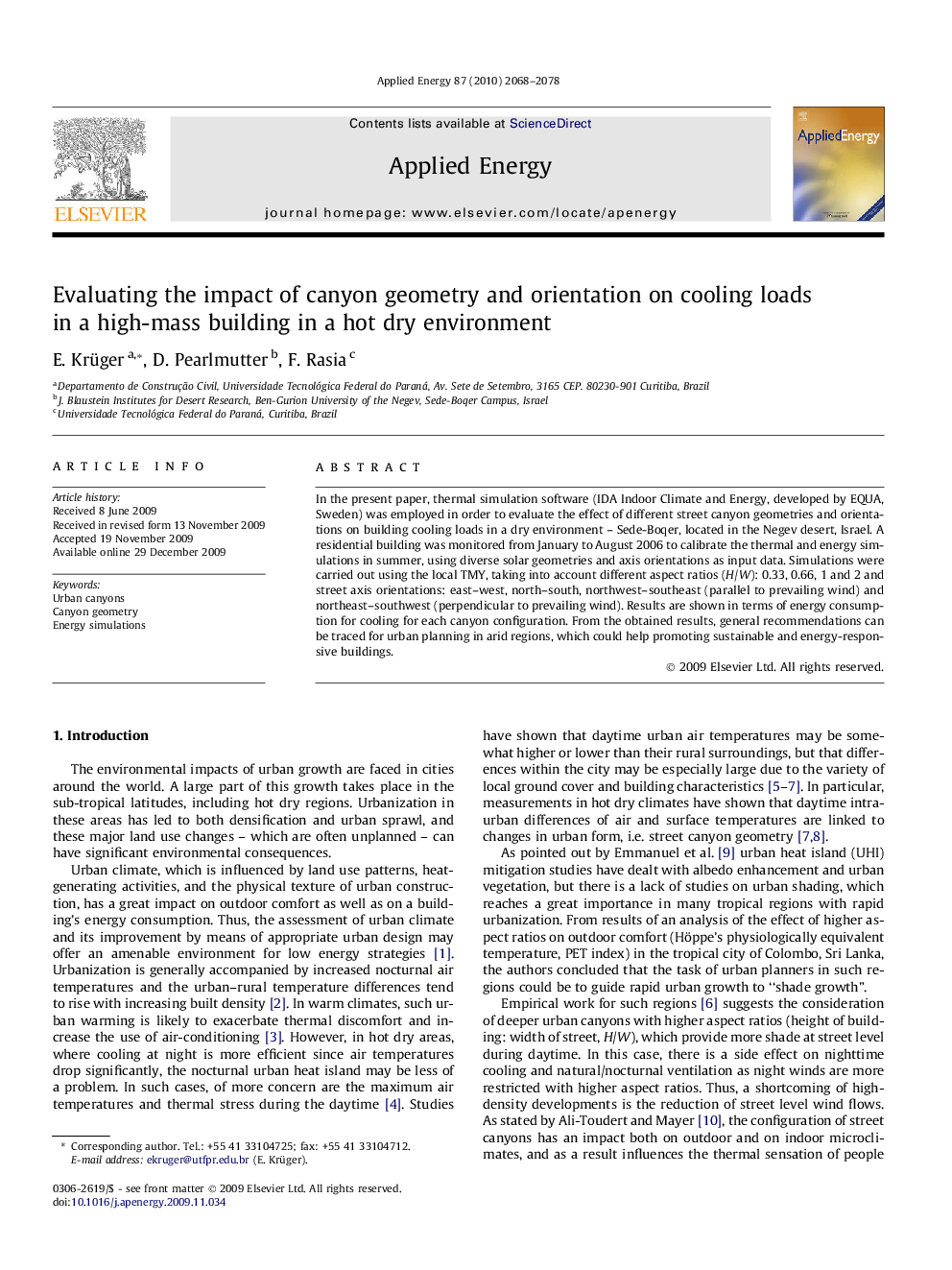| Article ID | Journal | Published Year | Pages | File Type |
|---|---|---|---|---|
| 244733 | Applied Energy | 2010 | 11 Pages |
In the present paper, thermal simulation software (IDA Indoor Climate and Energy, developed by EQUA, Sweden) was employed in order to evaluate the effect of different street canyon geometries and orientations on building cooling loads in a dry environment – Sede-Boqer, located in the Negev desert, Israel. A residential building was monitored from January to August 2006 to calibrate the thermal and energy simulations in summer, using diverse solar geometries and axis orientations as input data. Simulations were carried out using the local TMY, taking into account different aspect ratios (H/W): 0.33, 0.66, 1 and 2 and street axis orientations: east–west, north–south, northwest–southeast (parallel to prevailing wind) and northeast–southwest (perpendicular to prevailing wind). Results are shown in terms of energy consumption for cooling for each canyon configuration. From the obtained results, general recommendations can be traced for urban planning in arid regions, which could help promoting sustainable and energy-responsive buildings.
